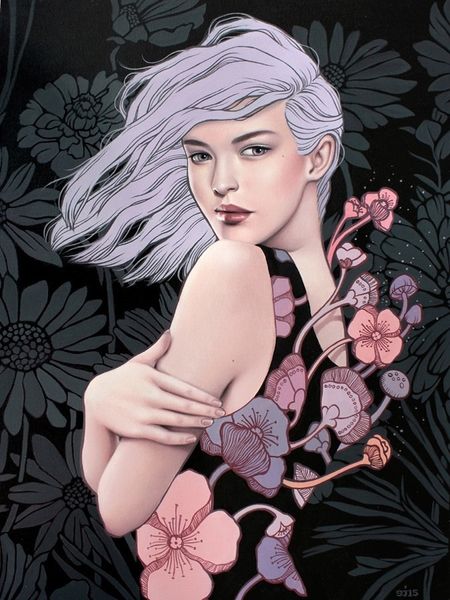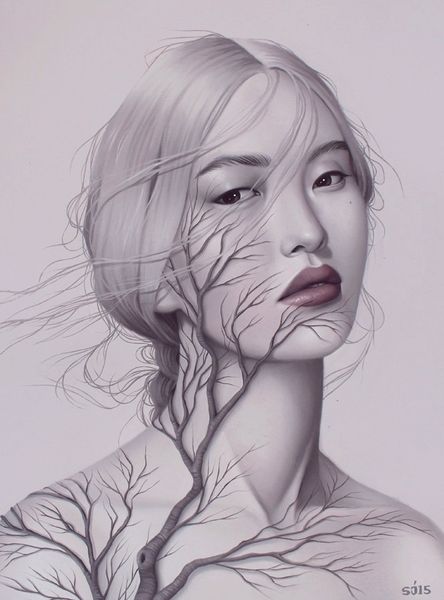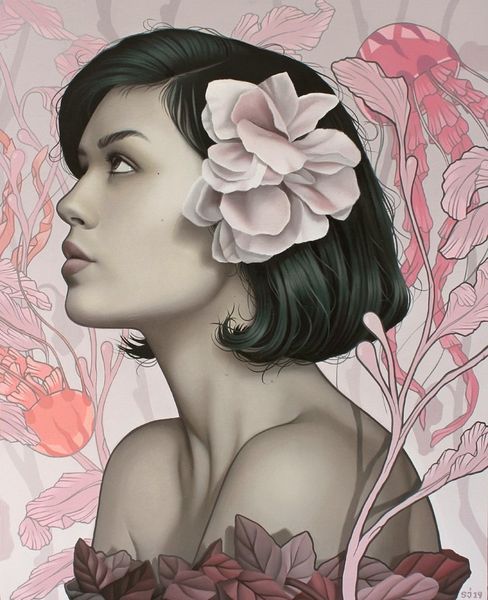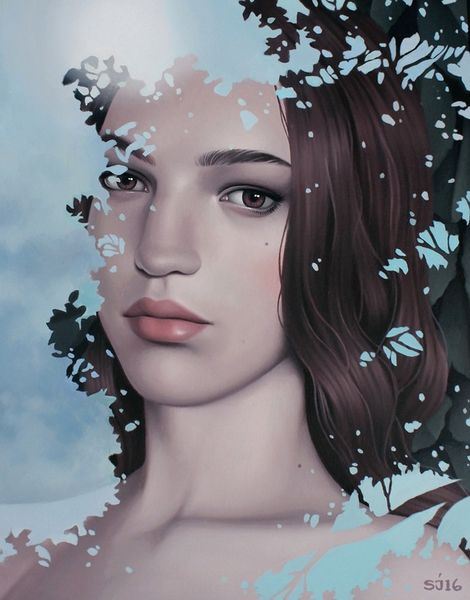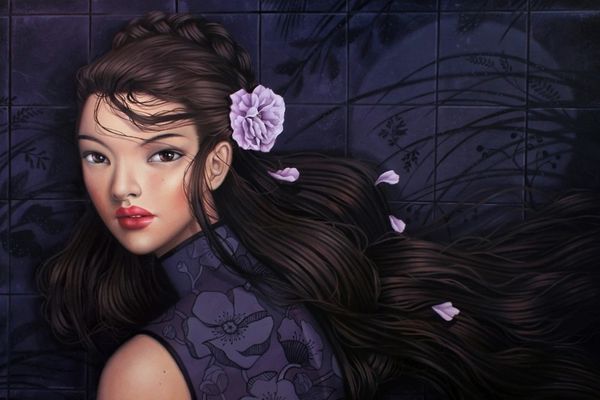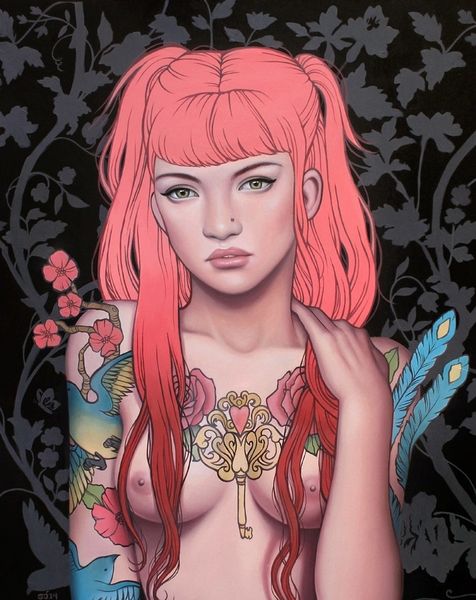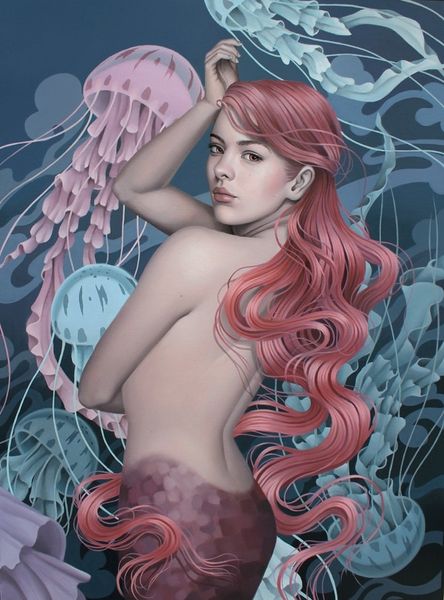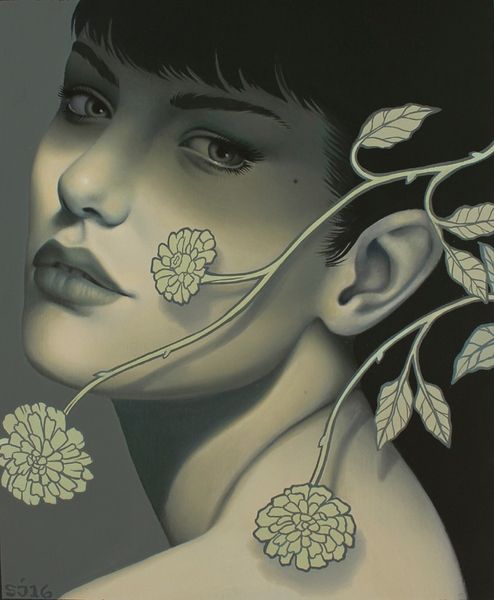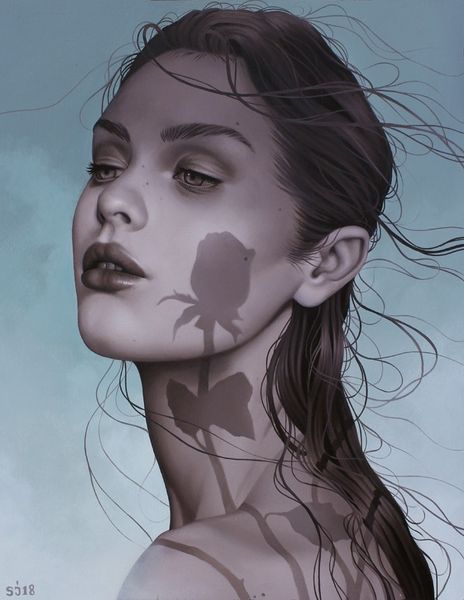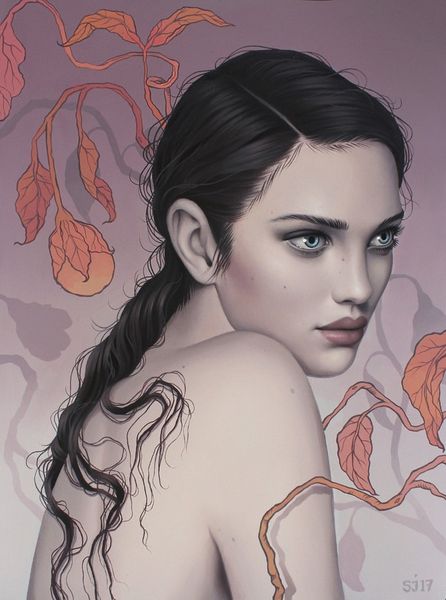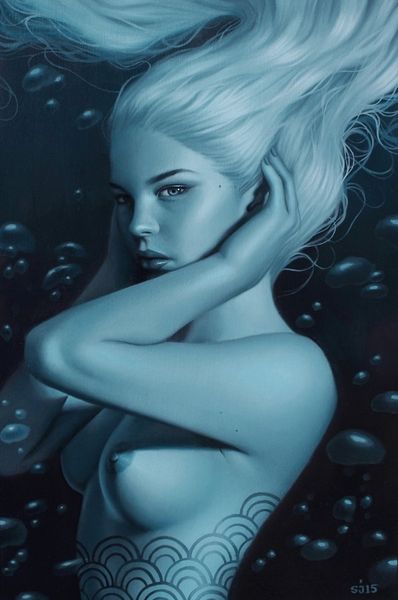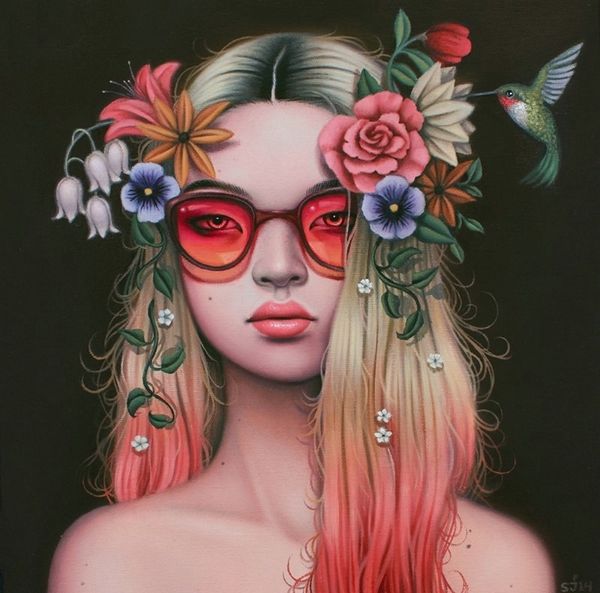
painting, acrylic-paint
#
figurative
#
contemporary
#
facial expression drawing
#
portrait image
#
painting
#
acrylic-paint
#
figuration
#
male portrait
#
portrait reference
#
portrait head and shoulder
#
animal drawing portrait
#
portrait drawing
#
facial portrait
#
portrait art
#
digital portrait
Copyright: Modern Artists: Artvee
Curator: This is "Smoke Show" by Sarah Joncas, created using acrylic paint. Editor: It's captivating. The pale palette, almost ethereal, but there's a distinct moodiness to her gaze. It evokes a certain pre-Raphaelite sensibility, though it feels very contemporary. Curator: Joncas’s work frequently examines contemporary concepts of femininity and identity. This portrait seems to place her subject in a space of fragility, the "smoke" possibly representing transient or dangerous social constructs. What narratives do you see at play in the image, considering societal expectations of young women? Editor: Interesting perspective! From a socio-political viewpoint, it is impossible to separate imagery like this from the contemporary aesthetics promoted on social media. What are the historic tropes about beauty? Does this speak to that lineage, and what it meant for women in public roles to adopt them? Curator: It’s a fascinating tension. The smoke could also symbolize an aspiration for transcendence or self-transformation, a way for this woman to cloak herself or perform freedom. Her expression holds something both vulnerable and knowing, so there may be a social message here about agency and its complexities. Editor: Right. How might a contemporary audience view this representation differently than, say, viewers from a hundred years ago? How has the politics of beauty changed, and remained unchanged? And if you view her representation in contrast with other portraits of women, especially as painted by male artists, it does beg the question of intention, of a self-conscious or active self-representation, despite any smoke, metaphoric or otherwise. Curator: Considering those layered questions of agency and historical portraiture definitely illuminates what Joncas is probing. She isn't merely presenting an aesthetic image. She's inviting us to dissect our assumptions, to trace the ongoing renegotiation of power, identity, and visual language that she plays with on this canvas. Editor: Indeed. Art isn’t produced in a vacuum; tracing its connection to the past can clarify a richer understanding of the artwork in front of us, and, in turn, challenge us to reconsider our assumptions about the present and the images circulating throughout our public roles, personal expectations, and art history itself.
Comments
No comments
Be the first to comment and join the conversation on the ultimate creative platform.
